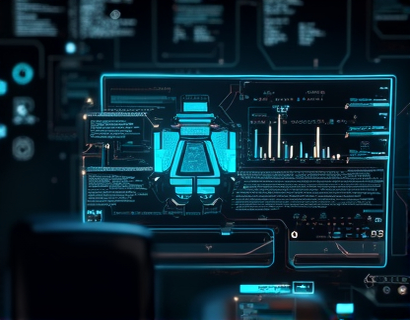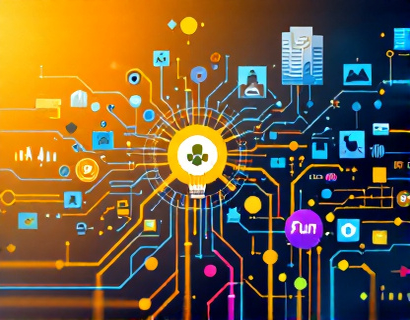AI-Driven Insights in Logistics: Empowering Professionals, Educators, and Students
The logistics industry is a complex network of processes and systems that facilitate the movement and storage of goods. As technology advances, AI-driven solutions are revolutionizing how professionals, educators, and students access and understand logistics insights. This article delves into the benefits and applications of AI-powered chat interfaces designed to provide specialized logistics knowledge, ensuring accuracy, safety, and educational value for all users.
Understanding AI-Driven Logistics Insights
AI-driven logistics insights refer to the use of artificial intelligence and machine learning algorithms to analyze vast amounts of data related to logistics operations. These insights can range from predictive analytics for supply chain optimization to real-time tracking and monitoring of shipments. By leveraging AI, logistics professionals can make data-driven decisions, enhance operational efficiency, and reduce costs.
Benefits for Logistics Professionals
For logistics professionals, AI-driven insights offer a competitive edge by providing up-to-date and accurate information. These tools can help in:
- Predictive Maintenance: AI can predict equipment failures before they occur, reducing downtime and maintenance costs.
- Route Optimization: Algorithms can analyze traffic patterns, weather conditions, and other factors to determine the most efficient routes, saving time and fuel.
- Demand Forecasting: AI models can predict demand fluctuations, enabling better inventory management and resource allocation.
- Risk Management: By analyzing historical data and current trends, AI can identify potential risks and suggest mitigation strategies.
These insights not only improve operational efficiency but also enhance decision-making capabilities, leading to more sustainable and profitable logistics operations.
Educational Resources for Students and Educators
The integration of AI in logistics education is transforming the way students learn and understand the industry. AI-powered chat interfaces serve as interactive learning tools that offer:
- Personalized Learning: Adapt to the user's knowledge level and learning pace, providing tailored content and exercises.
- Interactive Simulations: Simulate real-world logistics scenarios, allowing students to apply theoretical knowledge in practical settings.
- Access to Expert Knowledge: Connect with AI-driven resources that aggregate insights from industry experts, ensuring the information is accurate and up-to-date.
- Safe and Child-Friendly Content: Ensuring that even young students can explore logistics concepts without exposure to inappropriate content.
Educators can leverage these tools to create engaging and effective lesson plans, fostering a deeper understanding of logistics principles and practices.
Ensuring Accuracy and Safety
The accuracy and safety of AI-driven logistics insights are paramount, especially when used by professionals and students. Reputable platforms employ rigorous content verification processes to ensure the information provided is reliable and trustworthy. This includes:
- Expert Review: Content is reviewed by industry experts to validate accuracy and relevance.
- Regular Updates: Information is continuously updated to reflect the latest industry developments and best practices.
- User Feedback: Incorporating user feedback to improve and refine the content.
For educational purposes, especially for younger audiences, AI chat interfaces are designed with safety features such as:
- Content Filtering: Advanced algorithms filter out any inappropriate or sensitive content.
- Parental Controls: Options for parents to monitor and control the content their children access.
- Educational Focus: Emphasis on educational and informative content, aligned with curriculum standards.
These measures ensure that students and educators can use these tools confidently, knowing that the content is both accurate and safe.
Enhancing Learning Through AI Chat Interfaces
AI chat interfaces provide an interactive and dynamic way to learn about logistics. Users can engage in real-time conversations, asking questions and receiving immediate, detailed responses. This interactive approach enhances understanding and retention of complex logistics concepts. For example:
A student might ask:
What is the impact of blockchain technology on supply chain transparency?
The AI response could include:
A detailed explanation of how blockchain ensures transparency by providing an immutable and transparent ledger of transactions, reducing the risk of fraud and errors. It could also discuss real-world applications and case studies where blockchain has been successfully implemented in supply chains.
Such interactions not only provide immediate answers but also encourage further exploration and learning.
Case Studies and Real-World Applications
To illustrate the practical benefits of AI-driven logistics insights, consider the following case study:
A major e-commerce company implemented an AI-powered logistics system to optimize its delivery routes. The system analyzed historical data, real-time traffic updates, and weather forecasts to determine the most efficient routes for its delivery fleet. As a result, the company saw a 20% reduction in delivery times and a significant decrease in fuel consumption. This not only improved customer satisfaction but also contributed to the company's sustainability goals.
In an educational setting, students can study such case studies to understand the practical applications of AI in logistics. They can analyze the data, the algorithms used, and the outcomes, gaining valuable insights into how AI can drive innovation and efficiency in the industry.
Future Trends in AI-Driven Logistics
The integration of AI in logistics is an evolving field with numerous future trends on the horizon. Some key areas include:
- Autonomous Vehicles: The development of self-driving trucks and drones for last-mile delivery, reducing labor costs and increasing efficiency.
- Internet of Things (IoT): Enhanced connectivity between devices and systems, enabling real-time monitoring and data collection.
- Advanced Analytics: More sophisticated predictive models and machine learning algorithms for better decision-making.
- Sustainability: AI-driven solutions to reduce carbon footprints and promote eco-friendly logistics practices.
Staying informed about these trends is crucial for logistics professionals and students aiming to stay ahead in the industry. AI chat interfaces can serve as valuable resources, providing updates and insights into the latest developments.
Conclusion
AI-driven logistics insights represent a transformative force in the industry, offering unparalleled access to accurate, timely, and specialized knowledge. For professionals, educators, and students, these tools provide a comprehensive and safe platform to explore and understand the complexities of logistics. By leveraging AI chat interfaces, users can enhance their knowledge, improve operational efficiency, and contribute to the ongoing innovation in logistics.










































